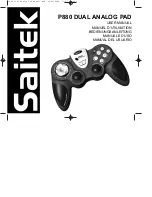
MEC 20 MICROPROCESSOR ENGINE/GENERATOR CONTROLLER
PM047 Rev 13 05/03/30
6
Thomson Technology
battery to the control panel should conform to the following guidelines to avoid possible
controller malfunction and/or damage.
2.2.1. Avoid wiring from the engine starter terminals - wiring should go directly
from the battery terminals to the engine control panel (to avoid voltage drop in
the starter cables and starter motor commutator noise).
Note:
Unit mounted
control panels with short wiring runs may utilize connections from the starter
terminals provided that the specific application is tested satisfactorily.
CAUTION!!!
The battery charger must be turned off before battery cables are removed
from the battery (i.e. for servicing). Failure to do so may subject the
control panel to an overvoltage condition in which damage may result.
2.2.2. Wiring from battery to engine control panel should be two - #14 AWG
(2.5mm
2
) wires (i.e. do not use the engine block as one of the common
conductors).
2.2.3. Under noisy environments (i.e. gas engines with high voltage ignitions,
etc.), wiring from battery should be a twisted pair of #14 AWG (2.5mm
2
) wires.
2.3. SPEED SENSING INPUT
Field wiring of the speed sensing signal wires should conform to the following guidelines
to avoid possible controller malfunction and/or damage:
2.3.1. Wiring from magnetic pickup must utilize a 2 conductor shielded/twisted
cable. The drain (shield) wire must be connected at the control panel end only.
2.3.2. Magnetic pickup voltage at cranking speed must be greater than 3.0VAC.
At nominal speed, magnetic pickup voltage should be between 3.0 and 5VAC.
2.3.3. A single dedicated magnetic pickup is recommended for connection to the
speed sensing input terminals.
Note:
One common magnetic pickup may be
utilized for the system provided specific test measurements are done with the
equipment installed (i.e. mag pickup voltage levels meet the required levels).
2.4. DC VOLTAGE INPUTS
All DC voltage inputs to the MEC 20 are optically isolated and filtered for protection from
noise spikes and transients Input wiring must be routed so that it is not near electrically
"noisy" wiring such as ignition, starter wires or main AC power conductors. All contacts













































